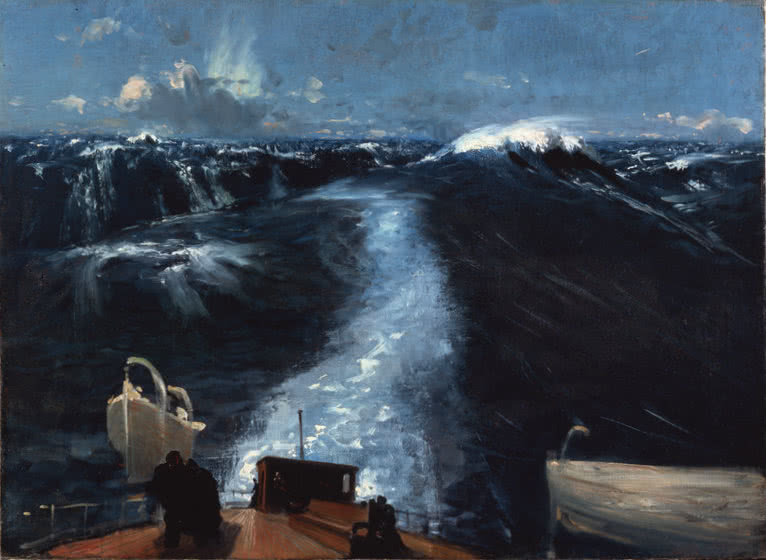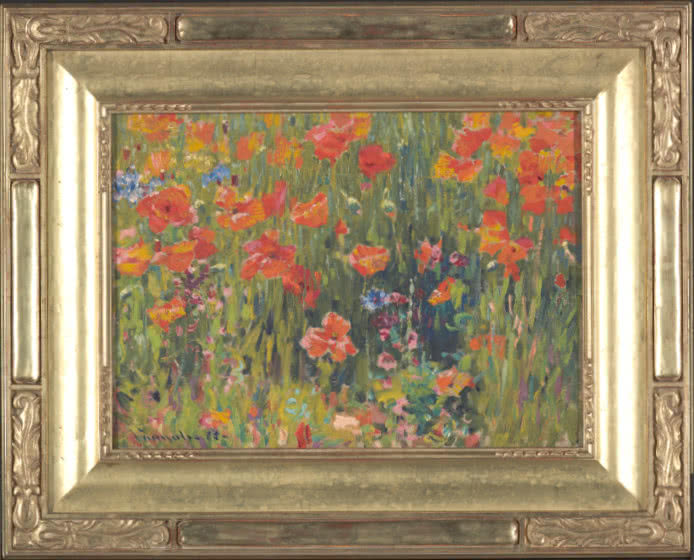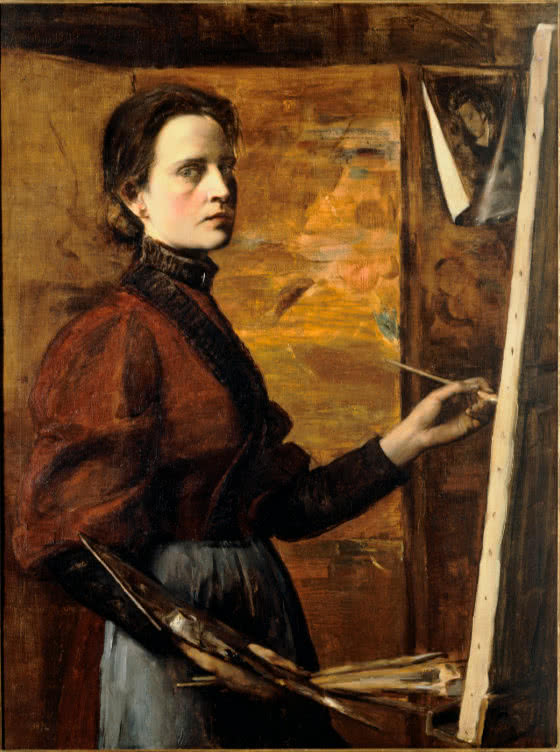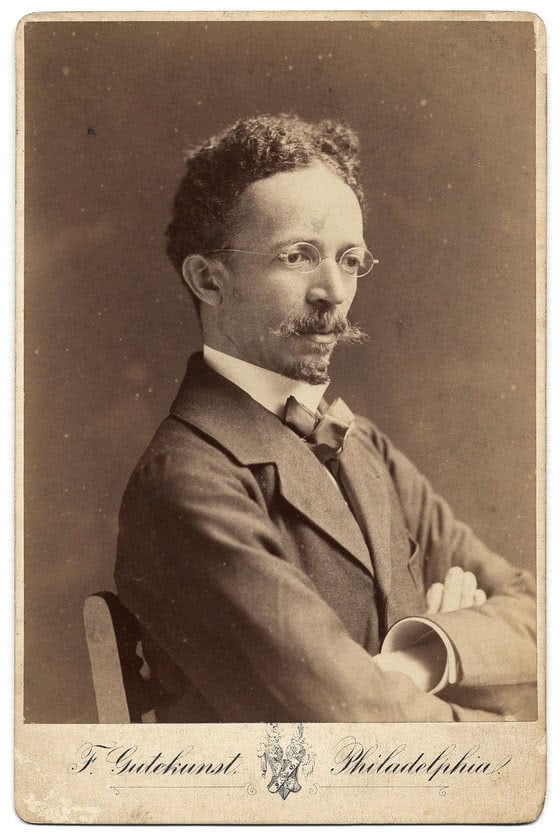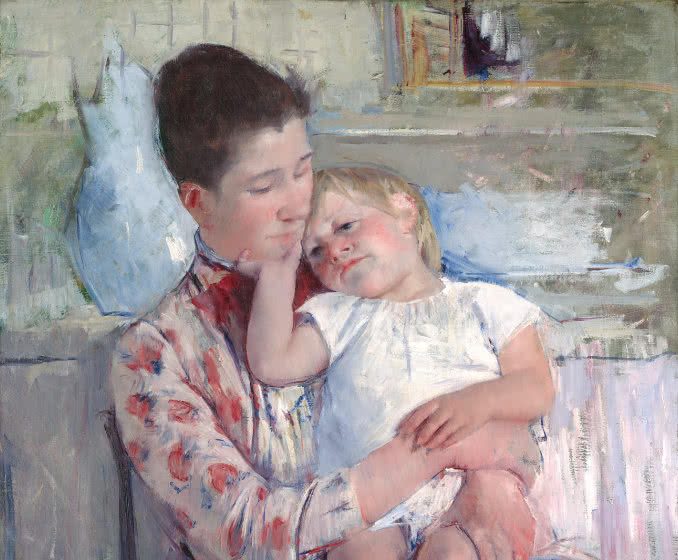To take advantage of the only time of the year when most academies and ateliers were closed, artists flocked outside of Paris during the hot summer months to scenic areas such as Pont-Aven, Grez-sur-Loing, and Giverny. They sought out picturesque subjects to which they could apply their skills. Americans congregated in artist colonies, to which some returned faithfully every year and where others chose to stay permanently.
Alongside their French colleagues, American artists mastered academic techniques in the Paris ateliers and copied Old Masters at the Louvre while absorbing the continually changing contemporary approaches to French art. They also sketched together in the French countryside. Since academic training emphasized the drawing and painting of the figure, American students found themselves painting landscapes more freely with fewer rules to follow. Their canvases contained a combination of approaches, often characterized by solid academic figures placed in loosely worked, luminous landscapes.
John Singer Sargent
American, 1856–1925
Atlantic Storm
1876
Oil paint on canvas
Myron Kunin Collection of American Art
Image courtesy Indianapolis Museum of Art at Newfields
Robert Vonnoh
American, 1858–1933
Poppies
1888
Oil paint on canvas
Indianapolis Museum of Art at Newfields: James E. Roberts Fund, 71.8
204. Robert Vonnoh, Poppies, 1888
Adele Tanner (AT): Have you ever run through a patch of poppies before? Well, if you haven't, I bet getting lost in this colorful painting will be all you'll need to imagine it! Robert Vonnoh was an American Impressionist who made this painting in France and people thought it was almost TOO modern. Why, you ask?
Poppy (P): (Interrupting. Royal accent) Because of the way it’s painted. The artist didn’t even bother to smooth out the brushstrokes! And he used such bright colors as he was capturing the impressions of light on natural objects. That seemed very shocking to viewers when they saw it for the first time.
AT: What...who said that?
P: (Scuffs) Ugh...down here! The prettiest poppy of the bunch!
AT: A...a talking poppy? I guess I can talk to flowers too! Hi I'm Adele Tanner and these are my friends!
P: Delightful. Nice to meet you Adele and Friends. Robert Vonnoh was inspired by our beautifully intense colors, something that was also popular with French Impressionists. He painted this as if we are smack dab in the middle of a whole garden of poppies. At a distance, we are a beautiful picture. Up close, there are quick blobs and dabs of unmixed colors that Impressionists made famous. Just look how he vigorously painted my red and gold blossoms floating over my green stems.
AT: That's exquisite! I mean...that's cool! Vonnoh and my Grandfather both studied art in France! Wow!
P: What a minute...did you say your last name was Tanner? Henry Tanner was your Grandfather?
AT: Yes!
P: Vonnoh and your Grandfather crossed paths briefly in France. He too, is an amazing artist who breathes life into his art!
AT: Thanks Poppy! See you later! We must find my grandfather again and tell him who we’ve met so far. Everyone, let’s meet at the next artwork we see by Henry Tanner!
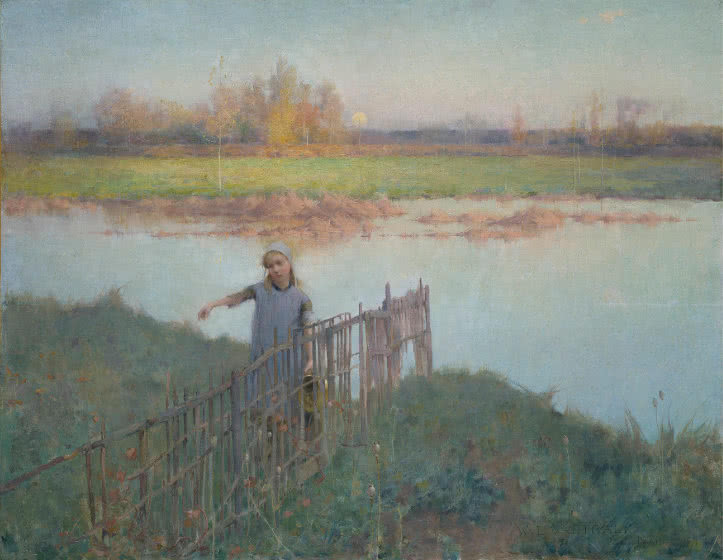
Hirshhorn Museum and Sculpture Garden: Gift of Joseph H. Hirshhorn, 1972, 72.200
Photo © Lee Stalsworth
Willard Leroy Metcalf
American 1858–1925
Sunset at Grez
1885
Oil paint on canvas
Hirshhorn Museum and Sculpture Garden: Gift of Joseph H. Hirshhorn, 1972, 72.200
Photo © Lee Stalsworth
Willard Leroy Metcalf, who trained in Paris at the Académie Julian, was part of a later generation of American artists drawn to the villages of Giverny, Pont-Aven, and Grez-sur-Loing, where he painted local landscapes bathed in luminous sunshine. Like other American artists exposed to the work of the French Impressionists—he was among the first Americans to paint in Giverny—Metcalf found his subjects in the local terrain.

Georgia Museum of Art, University of Georgia: Museum purchase with funds provided by the William Underwood Eiland Endowment for Acquisitions made possible by M. Smith Griffith and the W. Newton Morris Charitable Foundation, GMOA 2018.117
Image courtesy Georgia Museum of Art
Cecilia Beaux
American, 1855–1942
Twilight Confidences
1888
Oil paint on canvas
Georgia Museum of Art, University of Georgia: Museum purchase with funds provided by the William Underwood Eiland Endowment for Acquisitions made possible by M. Smith Griffith and the W. Newton Morris Charitable Foundation, GMOA 2018.117
Image courtesy Georgia Museum of Art
Before heading to France, Cecilia Beaux had achieved fame with her painting Les derniers jours d’enfance (The Last Days of Childhood), 1883–85. Thanks to the positive reception of the work in New York and Philadelphia in 1885 and at the Paris Salon of 1887, she was confident enough to travel to Paris in 1888. She continued her studies at the Académie Julian, where she benefited from working with William-Adolphe Bouguereau and Tony Robert-Fleury. That summer, she joined other Americans at the artist colony of Concarneau in Brittany where she painted Twilight Confidences, a work that came about from her “memory of impressions” rather than academic rigor.
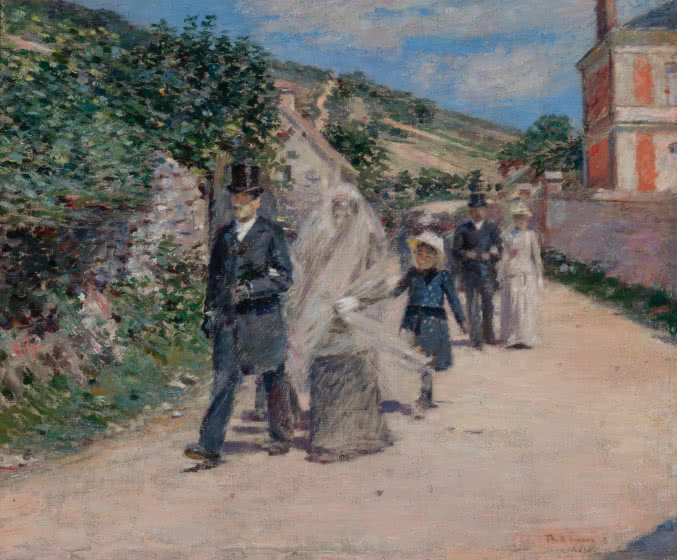
Terra Foundation for American Art: Daniel J. Terra Collection, 1999.127
Photography © Terra Foundation for American Art, Chicago
Theodore Robinson
American, 1852–1896
The Wedding March
1892
Oil paint on canvas
Terra Foundation for American Art: Daniel J. Terra Collection, 1999.127
Photography © Terra Foundation for American Art, Chicago
107. Countryside Excursions: Overview and Theodore Robinson’s The Wedding March
Narrator: A wedding procession meanders through the Normandy village of Giverny in this painting by Theodore Robinson. The groom is Robinson’s friend and fellow American artist Theodore Earl Butler, and his bride is Suzanne Hoschedé-Monet – Claude Monet’s stepdaughter.
Monet lived in Giverny. And American painters also gathered there.
Burns: Artists saw going out into the countryside as the place to play outside of academic conventions. It was pretty common for US artists to be in Paris for what today we think of as the academic year, and often artists would then in the summers go out to artists’ colonies, mostly in Normandy and Brittany to the west of Paris.
Narrator: There, they’d study the changing effects of light and weather on the landscape. They’d work “en plein air”, or outside in the fresh air – giving their work a sense of immediacy. In the past, outdoor sketches were often made as preparation for studio paintings, with smooth, carefully finished surfaces. But the Impressionists’ “sketches” were now exhibited as paintings in their own right.
Burns: If you look at the paintings in the gallery, you can see that none of the artists have exactly the same brush strokes. And so it becomes a formula that actually signifies the artistic individuality.
Perhaps the most famous summer outpost for Americans was the small village of Giverny, where the French Impressionist Claude Monet moved with his family in 1883. Giverny is a small village in Normandy about an hour by train from Paris. Between 1887 and 1890, the population of 300 expanded with the addition of 50 artists—almost all of them Americans—who wanted to paint where the French Impressionist resided. Theodore Robinson first visited Giverny in 1884, and unlike most of those who painted there, he became a close friend of Monsieur Monet.
Theodore Robinson
American, 1852–1896
A Hillside, Giverny
1887
Oil paint on canvas
Los Angeles County Museum of Art: Gift of the 2001 Collectors Committee, M.2001.72
Guy Rose
American, 1867–1925
Late Afternoon, Giverny
About 1905–13
Oil paint on canvas
The San Diego Museum of Art: Museum purchase, 1926.161
Bridgeman Images
108. Countryside Excursions: Theodore Robinson’s A Hillside, Giverny, and Guy Rose’s Late Afternoon, Giverny
Narrator: This remarkable hillside, with its narrow fields, sweeps up toward a horizon so high, it reduces the sky to a sliver of blue. And the foreground is simply a broad expanse of green, with only a tiny white figure to give a sense of scale. It’s an extraordinarily modern image – more about pattern and color than about recording the landscape’s exact appearance.
The painting was made by Theodore Robinson, who lived between the US and France for much of his career. He often worked alongside Claude Monet in Giverny. He also helped establish an American artists’ summer colony in the village, which became perhaps the most famous summer outpost for American painters in France.
Influenced by Monet and the other Impressionists, many American artists moved away from the darker tones and narrative subject matter of academic painting. They turned to a lighter, brighter approach, painting outdoors, and working directly in front of their subject, using swift, unblended brushstrokes. The increasing availability of mass-produced portable easels and paints in metal tubes - like we have today - made working outside much easier!
Nearby, you’ll find a view of trees and cottages bathed in the pink-violet light of late afternoon. It’s by California artist Guy Rose, who settled in Giverny for some years just after the turn of the twentieth century, having trained at the Académie Julian earlier. Rose also came to know Monet well and counted him as a friend and mentor.

Museum of Fine Arts, Boston: Gift of Miss Mary Appleton, 35.708
Photograph © 2021 Museum of Fine Arts, Boston
John Singer Sargent
American, 1856–1925
Fishing for Oysters at Cancale
1878
Oil paint on canvas
Museum of Fine Arts, Boston: Gift of Miss Mary Appleton, 35.708
Photograph © 2021 Museum of Fine Arts, Boston
109. Countryside Excursions: John Singer Sargent’s Fishing for Oysters at Cancale with four studies
Narrator: When this painting was first exhibited in New York City, viewers marveled at its silvery evocation of cool, northern light – and at the prodigious skill of the twenty-one-year-old artist. John Singer Sargent had arrived in Paris for training a few years earlier, astonishing everyone at the teaching studio.
Standring: He unrolled a whole series of drawings and everybody was aghast. It was shock and awe in Carolus-Duran's studio. And they said- this 18 year-old could produce work like this? - it's incredible.
Narrator: Sargent painted this picture on the Normandy coast – but it’s not easy to deal with a large canvas, paints and brushes, outdoors.
Standring: The wind might be blowing, there's a lot of rain in Normandy, it's not very warm all the time either.
Narrator: So he probably made the smaller figure studies that you see nearby outside. Then he used them to produce the larger painting back in his studio – a common practice. A larger version won Honorable Mention at the Paris Salon.
Standring: I think what's amazing about Sargent is that he's hard to pin down. He's not an academic painter, he's not a naturalist, he's not an impressionist. He's a little bit of everything. He was so fluid and versatile with his painting. And, boy, it's so difficult to imitate Sargent. He knows how much paint to put down and when to take his brush as he's painting it and twisting it and then leaving those wonderful dabs of color across the surface. And that's what makes his paintings so marvelous.
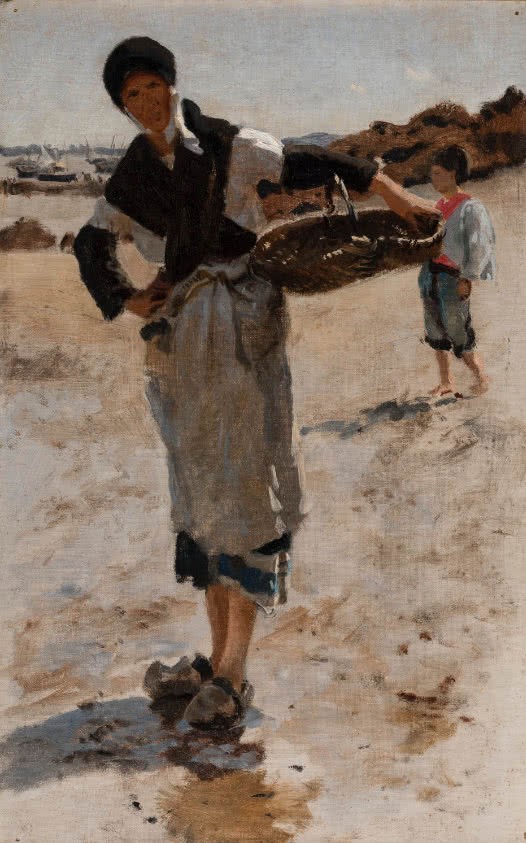
John Singer Sargent. American, 1856–1925. Breton Girl with a Basket, Study for En route pour la pêche (Setting Out to Fish) and Fishing for Oysters at Cancale. 1877. Oil paint on canvas. Terra Foundation for American Art, Chicago: Daniel J. Terra Collection, 1999.129. Photography © Terra Foundation for American Art, Chicago

John Singer Sargent. American, 1856–1925. Breton Woman with a Basket, Study for En route pour la pêche (Setting Out to Fish) and Fishing for Oysters at Cancale. 1877. Oil paint on canvas. Terra Foundation for American Art, Chicago: Daniel J. Terra Collection, 1996.53. Photography © Terra Foundation for American Art, Chicago

John Singer Sargent. American, 1856–1925. Girl on the Beach, Study for En route pour la pêche (Setting Out to Fish) and Fishing for Oysters at Cancale. 1877. Oil paint on canvas. Terra Foundation for American Art, Chicago: Daniel J. Terra Collection, 1999.131. Photography © Terra Foundation for American Art, Chicago
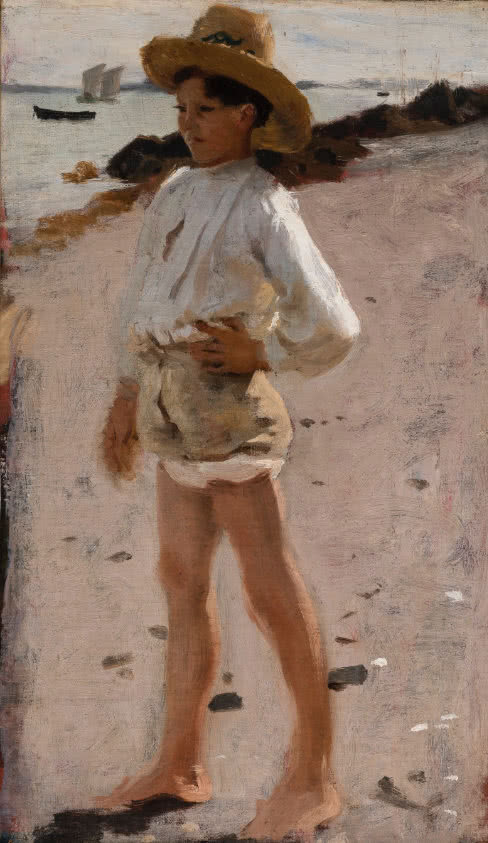
John Singer Sargent. American, 1856–1925. Young Boy on the Beach, Study for En route pour la pêche (Setting Out to Fish) and Fishing for Oysters at Cancale. 1877. Oil paint on canvas. Terra Foundation for American Art, Chicago: Daniel J. Terra Collection, 1999.132. Photography © Terra Foundation for American Art, Chicago
To me… their faces, their toil-stained hands tell the story of their lives.
Elizabeth Nourse, about age 36
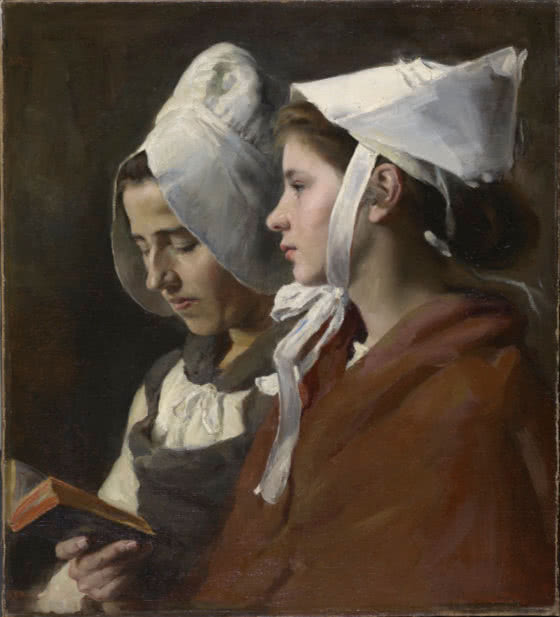
Colby College Museum of Art: The Lunder Collection, 2013.219
Image courtesy Colby College Museum of Art, Waterville, ME
Elizabeth Nourse
American, 1859–1938
Étude
1891
Oil paint on canvas
Colby College Museum of Art: The Lunder Collection, 2013.219
Image courtesy Colby College Museum of Art, Waterville, ME
Elizabeth Nourse enrolled at the Académie Julian in Paris in 1887. Like John Singer Sargent, she also studied with Carolus-Duran, where she quickly mastered draftsmanship of the human figure in the academic manner. This skill was a prerequisite for participation at the annual Salon, where Étude was exhibited in 1891. Her inspiration for the painting came from her visit to the Austrian village of Borst.
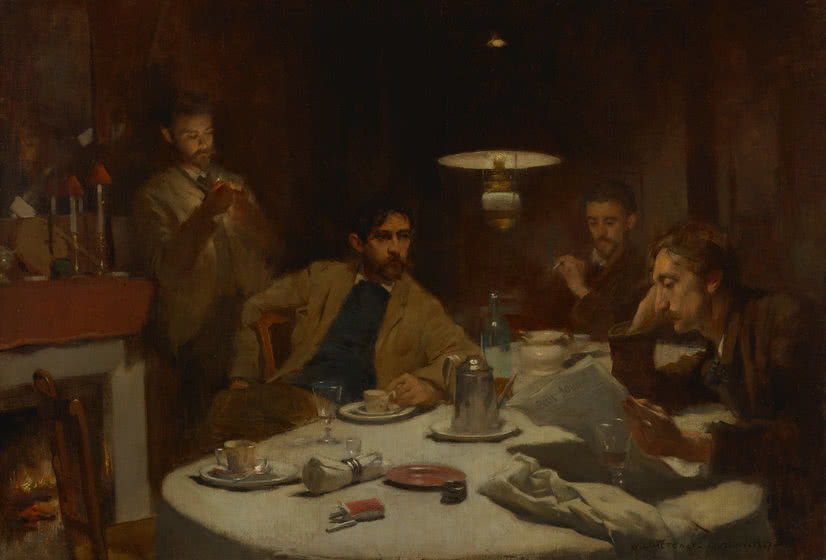
Willard Leroy Metcalf. American, 1858–1925. The Ten Cent Breakfast. 1887. Oil paint on canvas. Denver Art Museum: Gift of T. Edward and Tullah Hanley Collection, 1974.418
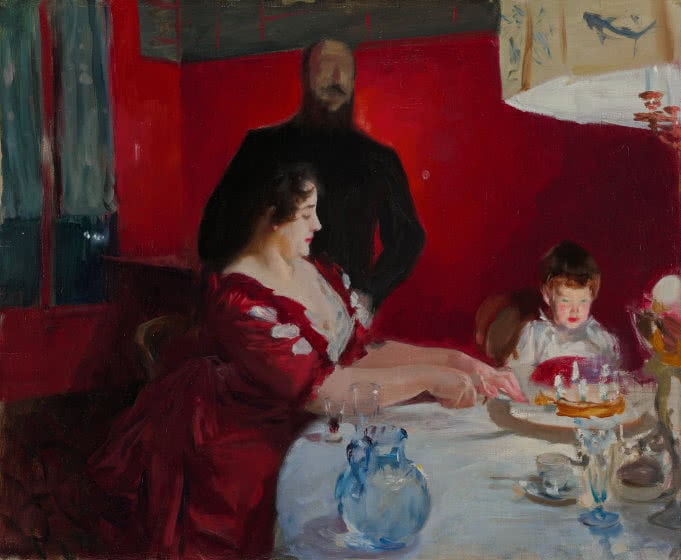
John Singer Sargent. American, 1856–1925. The Birthday Party. 1885. Oil paint on canvas. Minneapolis Institute of Art: The Ethel Morrison Van Derlip Fund and the John R. Van Derlip Fund, 62.84. Image courtesy Minneapolis Institute of Art
American artists frequently depicted friends and colleagues in intimate domestic settings.
John Singer Sargent’s painting shows the French painter Albert Besnard; his wife, Charlotte Dubray, a sculptor in her own right; and their son Robert, celebrating the young boy’s birthday. The artist’s hybrid stylistic approach reinforces his American individualism, especially in his lush handling, dramatic lighting, and a snapshot compositional viewpoint.
The title of Willard Leroy Metcalf’s painting alludes to the elegant table setting for the end of an elaborate brunch at the Hotel Baudy at Giverny. The group surrounding the table indulging in cigarettes, coffee, and more wine includes the Scottish novelist Robert Lewis Stevenson reading the newspaper, the artist Theodore Robinson to his right, and opposite his compatriot John Henry Twachtman. The standing man lighting his pipe may be Metcalf himself, though other identities have been suggested.
John Singer Sargent
American, 1856–1925
Madame Errázuriz
About 1880–82
Oil paint on canvas
Private collection
Photography courtesy Denver Art Museum
John Singer Sargent’s portrait of Chilean-born Eugenia Errázuirz, a friend and patron of his who also lived in Paris, is freely handled without the stylistic constraints of a commissioned portrait. By emulating the contemporary trend of looser handling, he painted a piece that lacks the academic finish of his submissions to the annual Salon. Here, he was content to leave the background completely unarticulated so that the head stands out. The overall effect is defiantly sketchy.
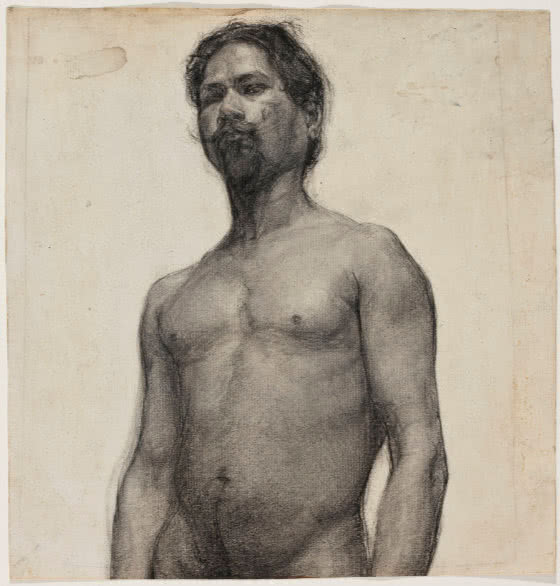
Henry Ossawa Tanner. American, 1859–1937. Study of a Negro Man. About 1891. Charcoal and pastel on cream laid paper. Detroit Institute of Arts: Founders Society Purchase, 69.453. Bridgeman Images
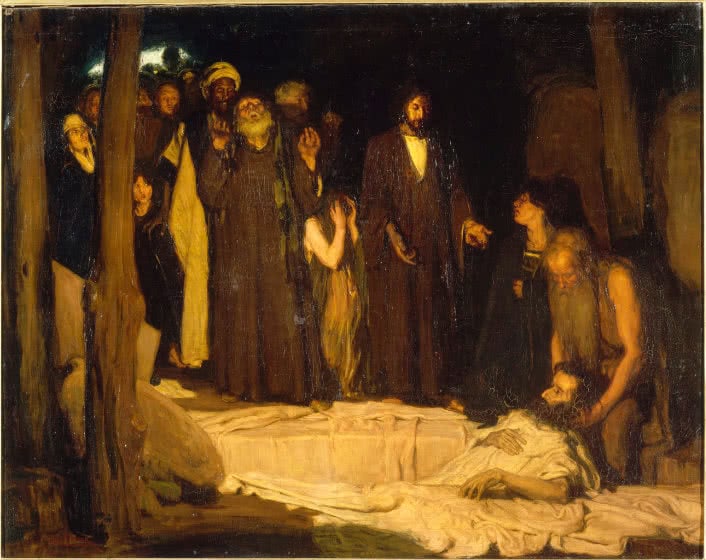
Henry Ossawa Tanner. American, 1859–1937. La résurrection de Lazare (The resurrection of Lazarus). 1896. Oil paint on canvas. Musée d'Orsay, acquired in 1897, RF 1980.173. Photo: Herve Lewandoswki. © RMN-Grand Palais/Art Resource, NY.
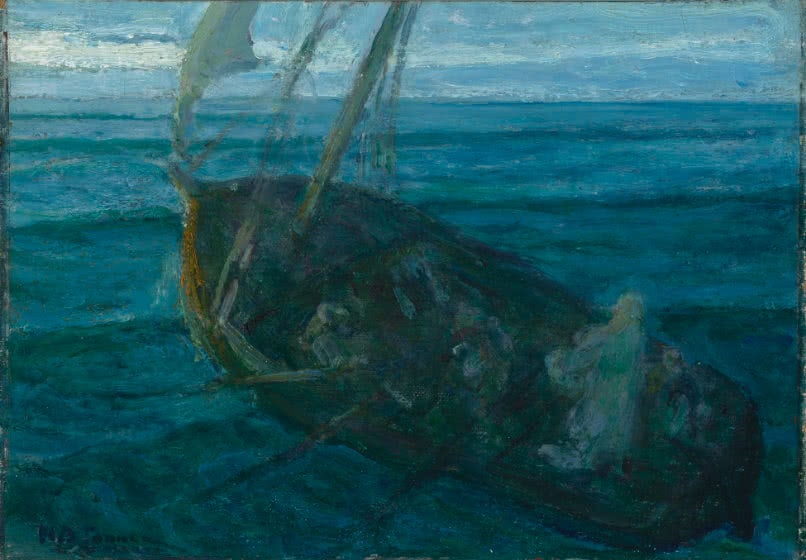
Henry Ossawa Tanner. American, 1859–1937. Christ and His Disciples on the Sea of Galilee. About 1910. Oil paint on canvas board. Virginia Museum of Fine Arts: J. Harwood and Louise B. Cochrane Fund for American Art, 2002.514. Photo by Katherine Wetzel. © Virginia Museum of Fine Arts
In 1891, the African American artist Henry Ossawa Tanner was on his way to continue his training in Rome but instead remained in Paris for much of the rest of his life. He studied at the Académie Julian, where his efforts to master the single male nude, an important step toward becoming a painter of pictures worthy of the Salon, is evident in Study of a Negro Man. Tanner spent the summer of 1896 in Paris creating his masterpiece, The Resurrection of Lazarus, which was exhibited in the 1897 Salon and acquired by the French government. The painting was awarded a third-class gold medal and elicited high praise from critics, one of whom placed Tanner “among the envied ranks of the arrived.” He was the first African American to be included in the Paris Salon.
Henry Tanner compared his experience of being a Black artist in Paris to the United States: “In Paris no one regards me curiously. I am simply Mr. Tanner, an American artist. Nobody knows or cares what was the complexion of my forebears. I live and work there on terms of absolute social equality.”
202. Henry Tanner Cameo
Adele Tanner (AT): Grandfather? Grandfather Henry?
Henry Tanner (HT): Well I’ll be. Is that my Granddaughter Adele? Oh darling, the future looks mighty fine on you! (Beat) Welcome to this room that is set up like the grand French Salon, the most important exhibition of art each year in Paris. Here, you would see thousands of artworks, paintings, and sculptures! I was included in the Paris Salon with this painting. If you look in the livret or little brochure you received, you will find the names of the artists and paintings in this Salon room. Look for mine: Henry Ossawa Tanner.
AT: Wow, grandfather. I've never seen this one before.
HT: Oh yes! I painted this when I became most confident as an artist and began selling my paintings back in Philadelphia. Unfortunately, I faced a lot of racism there. As an African American artist, I was extremely timid made to feel that I was not wanted in a place where I had every right to be. My heart sank and it caused me so much pain. I decided to move to France where my paintings would be accepted.
AT: I'm sorry that happened. I have to put this in my article! I love that you paint African Americans like us, but don't like the fact you had to deal with horrible racism.
HT: It made me stronger and molded me to be the artist I am today. Yes, add that to your article Granddaughter.
AT: Of course! Grandfather, as you know my time is so short here and we have so much more to see so I can report back for my article. Shall we meet back up in a bit?
HT: Ah, yes. I do think you may just see me pop up down the road.
AT: Wonderful! See you soon! Friends, meet me next at a painting called Green and Violet: The Evening Walk.
Access Guide Sections
Whistler to Cassatt: American Painters in France is organized by the Denver Art Museum. The exhibition is supported by the Tom Taplin Jr. and Ted Taplin Endowment, the Kristin and Charles Lohmiller Exhibitions Fund, the Wyeth Foundation for American Art, Kathie and Keith Finger, Lisë Gander and Andy Main, Lauren and Geoff Smart, Christie’s, the French American Museum Exchange (FRAME), the generous donors to the Annual Fund Leadership Campaign, and the residents who support the Scientific and Cultural Facilities District (SCFD). This exhibition is supported by an indemnity from the Federal Council on the Arts and the Humanities. Promotional support is provided by 5280 Magazine and CBS4.

